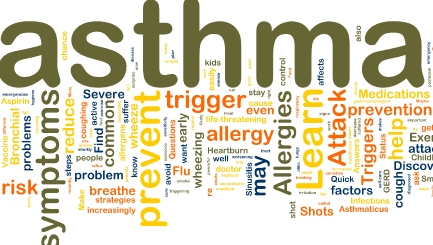Does Your Job Put You at Risk of Developing Asthma?
 If you’re a woman, and are, or have been, employed as a housekeeper, your wellbeing is at risk due to cleaning chemical exposure. This is according to a Spanish study performed by Dr Josep Anto from the Municipal Institute of Medical Research, who found that a large percentage of women who were currently or used to be housekeepers were at an increased risk of developing asthma.
If you’re a woman, and are, or have been, employed as a housekeeper, your wellbeing is at risk due to cleaning chemical exposure. This is according to a Spanish study performed by Dr Josep Anto from the Municipal Institute of Medical Research, who found that a large percentage of women who were currently or used to be housekeepers were at an increased risk of developing asthma.
Hundreds of women were evaluated for the study, of whom 40% held employment as housekeepers in the past or present. Of these women, the researchers discovered that one in eight suffered from asthma, whilst bronchitis affected the wellness of one in six women of these women who held cleaning positions. However, this is only one industry in which chemical exposure increases the onset of adult asthma.
The study found that 18 high-risk jobs are linked to the adult asthma cases, with farmers topping the charts due to their use of cleaning products on equipment, pesticides, and even small particles of flour and grains. For this latter reason, bakers and flour mill workers are also at risk, and even care workers and hairdressers aren’t safe. The list also includes those who work in silk-processing, research laboratories, the food industry, the pharmaceutical industry, healthcare, the electronic industry and those who work with fish or animals.
So why are these professions so dangerous? The small particles found in cleaning products and grains are easily inhaled, and so these can get into your airways and irritate them, causing respiratory problems. Many high-risk chemical agents include acetic acid, anhydrous ammonia, bleaching agents, burned-paint fumes, chlorine gas, floor sealant, hydrochloric acid, locomotive/diesel exhaust, phosgene, phosphoric acid, silicon, silo gas, smoke, sodium hydroxide, sulphuric acid, toluene diisocyanate and welding fumes.
This risk of adult asthma is commonly overlooked by employers, who instead focus on educating their employees on more serious risks rather than constant inhalation. However, with the wide-spread nature of this condition, it is time for employers to take action and identify the high-agents used by employees on a regular basis. These either need to be replaced, or used by employees who do not have a history of asthma. Employees also need to be equipped with the right respiratory protection, including masks and educated about the risks involved with their everyday duties.


Comments are closed.